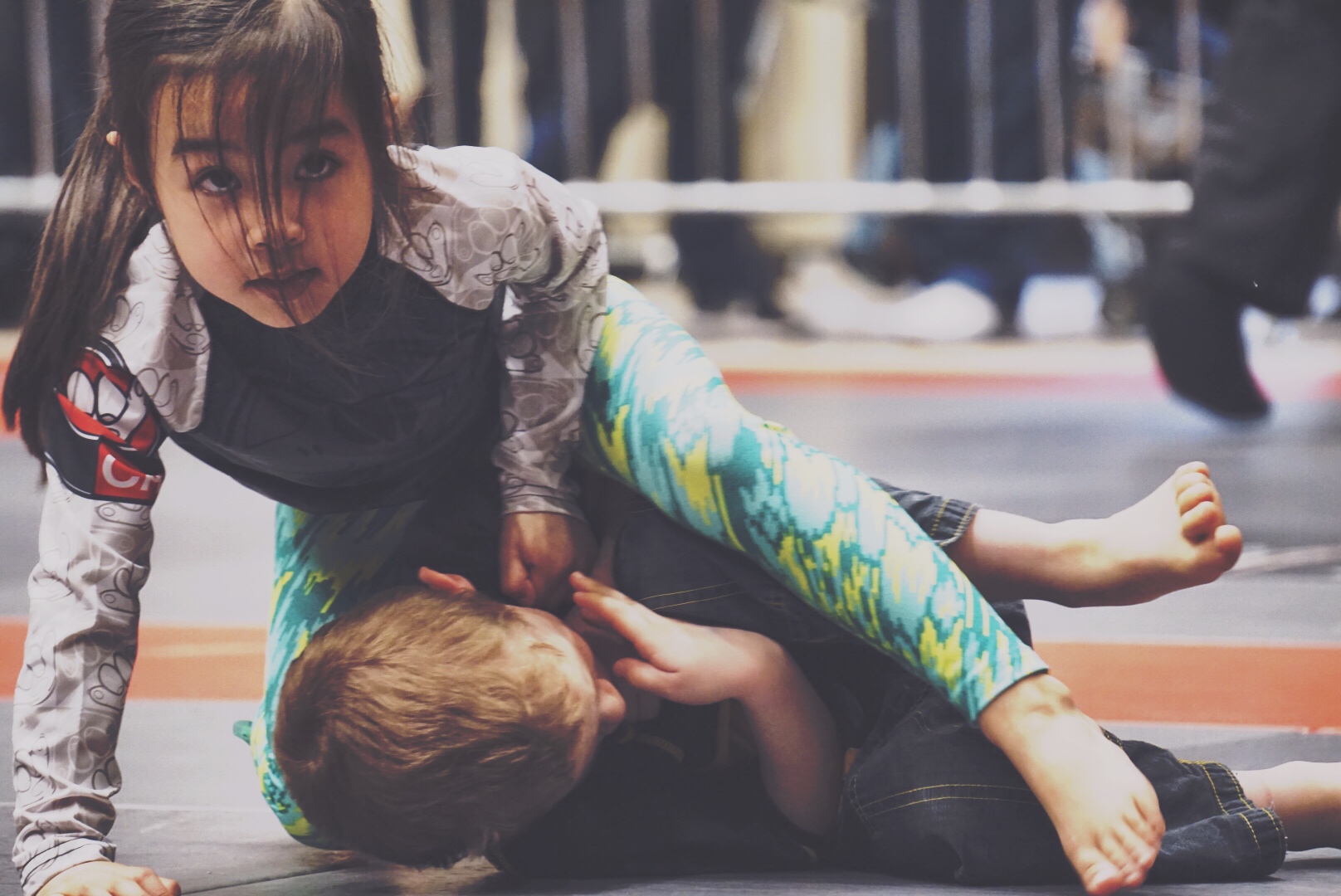Takedowns come in a variety of methods and are a great way to score 2 points early in a jiu-jitsu match. When you think of takedowns, wrestling should automatically come to mind. A single leg takedown or a double leg takedown are a couple of examples. Judo style throws are also included in the category of takedowns. A couple of popular judo throws are uchi mata, which is a full hip toss and seio nage, a shoulder throw. These examples of takedowns are very common in jiu-jitsu competition.
Pulling guard is another system of getting your opponent to the ground. The objective of pulling guard is to establish grips on your opponent so that you can start employing the guard of your choice. Whether it's butterfly guard, half guard or spider guard you want to be able to sweep and end up in a top position. In some cases you can catch a submission from pulling guard such as a flying submission like a flying triangle or flying armbar. Flying submissions can also be considered pulling guard. Either way, you want to end up in a dominant position going this route.
The truth is that these methods do work, but they do have their flaws. Competitors that either pull guard or perform takedowns use them to their advantage because it's a strength in their game. Although some may be good at both they usually use one more than the other because of the success they've had using their chosen tactics. Each situation is different, depending on who's facing who, but it's also good to be aware of how both sides are played.
The types of obstacles that one can experience from performing takedowns is that their opponent may sprawl on them or stuff the attempt. On occasion when going for a single leg takedown it can be countered with a guillotine if not applied correctly or with a kimura grip allowing your opponent to threaten the submission or to sweep you. When pulling guard you may encounter an opponent who is keen on passing. Even if you establish your grips, sit down and even use a straightened leg to keep your opponent at bay - they may already have a game plan to neutralize whatever guard you pull. If you look to pull half guard they may kick out the leg you're trying to trap and go around your bottom leg and pass to knee on belly, side mount or even spin to the back if you turn in on your side trying to chase that leg. If you pull using spider guard you need to act without haste or your opponent will establish grips on your pants and push your legs out of the way and start passing. These are just a few examples of how pulling guard and takedowns can be defended.
I reached out to some black belt instructors and competitors and this is what they had to say:
When asked his thoughts on takedowns and pulling guard, Simpson Go, seasoned competitor and head instructor of Cobra Kai Jiu-Jitsu in Las Vegas, said, "I think it just depends on where your strength and weaknesses are. If you're a good guard player, pulling will be to your advantage and it'll definitely save you some energy. Taking someone down can be really tiring. With that being said though, you get to end up on top and you might even be able to end up in a dominant position off the takedown. Not to mention, you end up scoring first."
Donald Flowers, a competitor and black belt instructor at Gracie Barra La Cañada Flintridge in Southern California added, "I think it is important to be knowledgeable in both takedowns and guard pulling... You should understand how to initiate takedowns and defend takedowns. You should also know how to defend guard pulls and initiate guard pulls. But the most important thing, is to focus on what works for you. Everybody is different and certain people will develop guard pulls and attacks better than takedowns and vice versa. Do what's best for you, but also be aware of all aspects of the art."
Fritz Rodriguez, owner and head instructor at SoCal Fight Factory, says, "In my opinion, it really depends on what the situation is. A lot of top level Jiu-Jitsu competitors have had huge success in having the strategy of pulling guard to a sweep, reversal or even foot and leg locks. In competitions that are pure grappling with the gi or no gi, pulling guard makes sense for someone who is s proficient from this position.
To be a complete Jiu-Jitsu fighter, you have to be able to adapt and know the different situations you are placed in and be knowledgeable of what techniques to apply. If it's sport Jiu-Jitsu and you know that you have an edge against a competitor if you play from your guard, then pulling guard is your best option. If you know your opponent can pass the guard well, then put him in his back. My point is, you have to practice how to do both if you want to be well rounded."
In conclusion, it's a common notion among these three black belts that knowing takedowns and pulling guard along with everything in between is advantageous in competition success. Play guard if yours is better, take your opponent down if he prefers the top game. Each situation is unique for every competitor and having a game plan for competition is a tool that can be sharpened over and over. Understanding the offensive and defensive aspects, along with how to counter each one can play in your favor.

























































